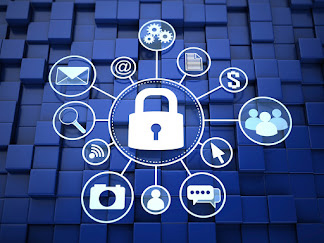HOW TO PROTECT YOUR PC FROM THREATS?
1. Use an antivirus
Installing antivirus software and
updating it regularly is a crucial step in securing your computer. It will
protect your laptop against attacks by blocking them directly. It can also make
reports on the security status of your computer: if there is malware that has
managed to slip into it, you will be aware and you can intervene.
Be careful, only install one, otherwise there could be
conflicts between them.
A firewall is a device that controls the flow of information
between your computer and the Internet. It will filter the data packets
(including the IP address of the sending machine, the IP address of the
receiving machine, the type of packet and the port number) that are exchanged
between your computer and the network. In this way, it will protect you from
outside intrusions. Depending on how you have configured your firewall, it will
automatically accept some data packets, deny others, also automatically, and
ask you for permission for those you haven't defined but are trying to access
to your computer.
Every computer has a firewall which can be accessed in the
security settings. Again, we recommend that you change the basic options to
configure more robust settings. Expand the field of requests so that you can
always have an eye and validate requests for access to your computer.
3. Remove software that is useless
Every software you have installed on your computer is a
gateway for hackers. They will exploit all the vulnerabilities that are in your
software (i.e. flaws or weaknesses). The less software you have installed, the
less attack possibilities you have. We therefore strongly recommend that you
remove any software that you deem unnecessary, after having verified that it is
safe to remove it.
For the software that you absolutely need, we recommend that you
go to the settings to change what is offered by default. Opt for maximum
security and protect all your software with strong passwords.
4. Secure your browser
Web browsers installed on newer computers usually do not have
secure settings by default. We therefore advise you to go to the advanced
settings of your browser in order to configure them yourself with much more
secure options. This is a key step in improving the security of your computer
as many attacks come through browsers. And if your browser asks if you want it
to remember your password, say no. Better not to save any password online.
We also recommend that you use private browsing. To do this,
you just need to open a new page, right click and choose this option. (Private
browsing also allows you to get the best prices for booking a flight online).
Also limit the number of plug-ins, or expansion modules, that
you install.
5. Make all updates
Installing an update often takes many minutes, and everyone is
tempted to push the “try again in an hour or tonight” button to avoid wasting
many minutes. But this is a huge mistake. Most software vendors release updates
to correct vulnerabilities, vulnerabilities, and weaknesses in their software.
And also to protect you from all the new malware that comes out every day.
Failure to update then allows hackers to go through these loopholes or use the
latest techniques to attack your computer.
6. Be careful with links in emails
Be careful with attachments and links that are in emails, this
is the primary means of spreading viruses. Malware is generally distributed
this way: someone clicks on a link they think is reliable, becomes infected,
and unwittingly sends the malware to all of their contacts. So do not open
attachments or click on links unless you are sure they are safe. Be wary, even
if they are from someone you know, as that person may have been infected
themselves.




Comments
Post a Comment